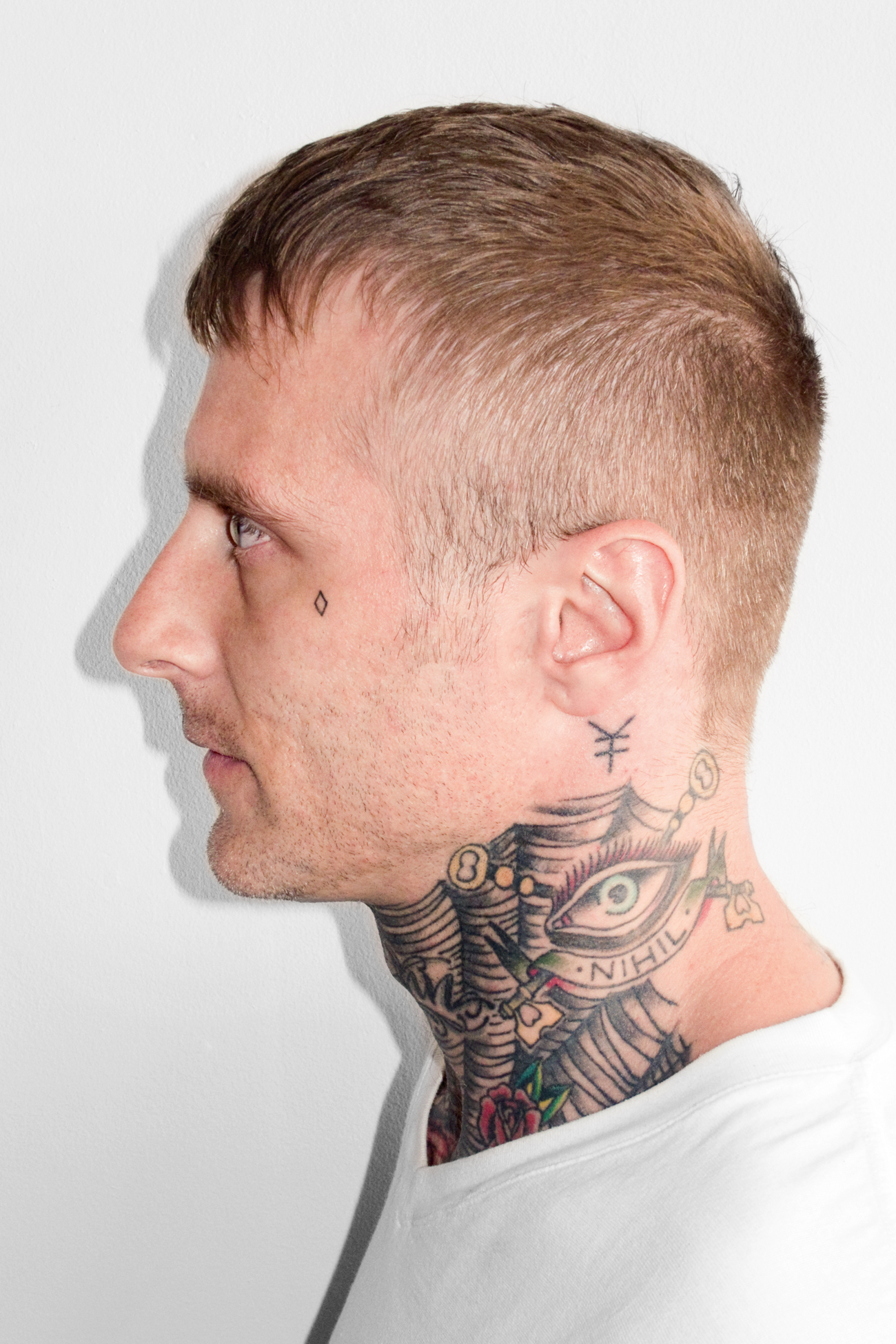Purple Magazine
— F/W 2010 issue 14
Banks Violette
 Portrait by Terry Richardson
Portrait by Terry Richardson
interview by GLENN O’BRIEN
portrait TERRY RICHARDSON
BANKS VIOLETTE might be described as an artist who sits astride the coordinates of Dan Flavin, Ozzie Osborne, Donald Judd, and Lars Ulrich. He looks heavy metal but he thinks minimal — and, in a way, he is a cultural product of Metal and Minimalism. But that’s just the gloss, a starting point. His track is refreshingly without limitation. A high school dropout with an MFA from Columbia University, Banks is a spectacular oddball, one who makes haunting sculptures that reinvigorate played-out symbolism, using electricity, propane, salt, plywood, aluminum, and any means necessary. In 2005, he had a one-man show at The Whitney Museum, and I’ve been intrigued by his work ever since. Banks has also shown work at The Team Gallery and Barbara Gladstone Gallery in New York. I visited him at his…